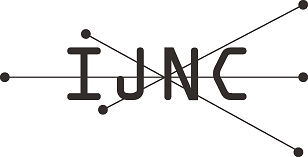Optimal Randomized Complete Visibility on a Grid for Asynchronous Robots with Lights
Abstract
We consider the distributed setting of N autonomous mobile robots that operate in Look-Compute-Move (LCM) cycles and communicate with other robots using colored lights (the robots with lights model. This model assumes obstructed visibility where a robot cannot see another robot if a third robot is positioned between them on the straight line connecting them. In this paper, we consider robot movements to be on a grid (integer plane) of unbounded size. In any given step a robot positioned at a grid point can move only to an adjacent grid point to its north, south, east or west. The grid setting naturally discretizes the 2-dimensional plane and finds applications in many real-life robotic systems. The Complete Visibility problem is to reposition N autonomous robots (starting at arbitrary, but distinct, initial positions) so that, on termination, each robot is visible to all others. The objective in this problem is to simultaneously minimize (or provide trade-off between) two fundamental performance metrics: (i) time to solve Complete Visibility and (ii) area occupied by the solution. We also consider the number of distinct colors used by each robot light. We provide the first O(max{D,N})-time algorithm for Complete Visibility in the asynchronous setting, where D is the diameter of the initial configuration. The area occupied by the final configuration is O(N^2); both the time and area are optimal. The time is randomized if no symmetry breaking mechanism is available for the robots. The number of colors used in our algorithm depends on whether leader election is required or not: (i) 17 colors if leader election is not required and (ii) 32 colors if leader election is required.
Full Text:
PDFRefbacks
- There are currently no refbacks.
